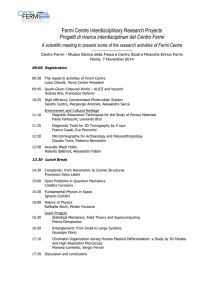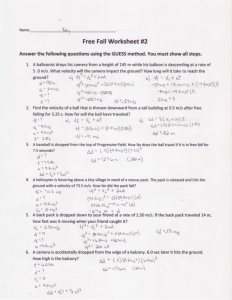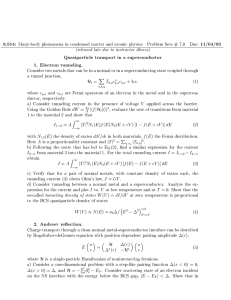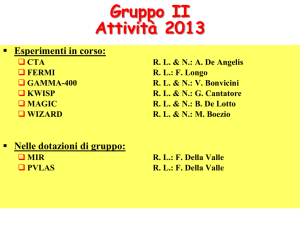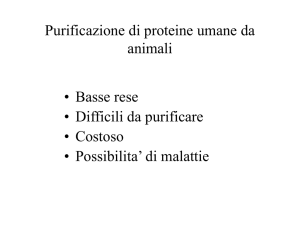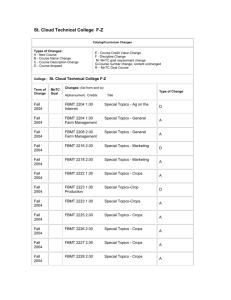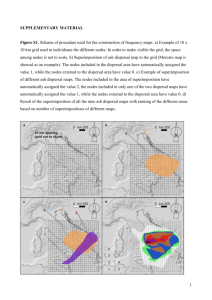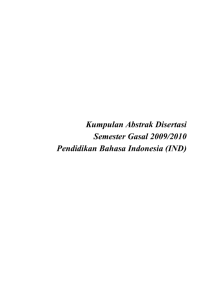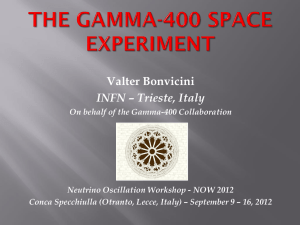Metodologie per la didattica della fisica
advertisement
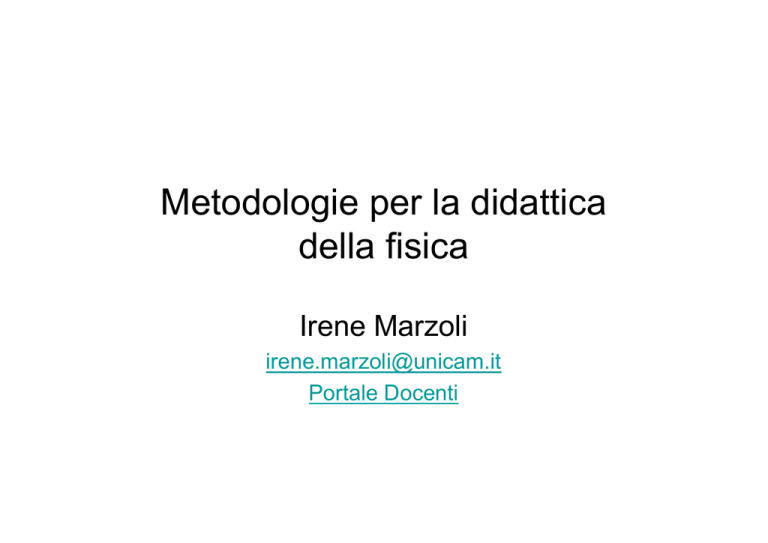
Metodologie per la didattica della fisica Irene Marzoli irene.marzoli@unicam.it Portale Docenti Nuffield Science Teaching Project • Sviluppato da insegnanti in Gran Bretagna dal 1962 • Insegnamento di chimica, fisica e biologia nella scuola secondaria (O-level examination) • Guida per l’insegnante e non un semplice sillabo • 5 volumi + uno dedicato ad esami e test Teaching science for understanding • Physics for all • Sperimentare in autonomia (a scientist for a day) • Apprezzare l’unitarietà della fisica (connected knowledge) • Capire il significato di formule ed equazioni • Discutere le possibili soluzioni – imparare a porre domande Examining for understanding • • • • • Cheap recall vs. simple recall Expensive recall Intelligent guessing Teaching recall Open or loose questions Esami e verifiche a) State an expression for the distance, s, travelled from rest in time t by an object moving with constant acceleration a. b) How far will an electric light bulb fall from rest in 10 seconds? Esami e verifiche a. In the expression s = ut + 1/2 at2, (i) What does u stand for? (ii) What does ut tell us? (iii) Explain why the 1/2 is there. b. If you used this expression for the free fall of an electric light bulb dropped from rest, you could expect it to predict quite well the distance fallen in 1 or 2 seconds. But if you used the expression for a 10-second fall, the prediction would disagree seriously with a test by experiment. Suggest why. c. What kind of motion would you expect for the bulb after 10 or 20 seconds of fall? Why? Controllare l’ordine di grandezza Quesito 1 Quant’è, approssimativamente, la capienza di un cucchiaio da minestra? a) 1.2 x 10-3 m3 b) 120 mL c) 12 x 10-3 L d) 1.2 cm3 e) 0.12 x 10-3 dm3 Soluzione quesito 1 Quant’è, approssimativamente, la capienza di un cucchiaio da minestra? a) 1.2 x 10-3 m3 = 1.2 L b) 120 mL c) 12 x 10-3 L = 12 mL d) 1.2 cm3 = 1.2 x 10-3 dm3 = 1.2 mL e) 0.12 x 10-3 dm3 = 0.12 mL Una scodella di minestra 240 ml, 20 cucchiaiate, circa 12 mL. Fermi problem From a letter written by Prof. Philip Morrison of Cornell University “... It is by no means possible to specify the training and readiness of a prospective graduate student by a mere list of topics. There is a kind of power over the theoretical and experimental studies in which he has engaged which is difficult to define, but whose presence is perhaps more important than much knowledge which is more formal and complete. There is one test for such power which is at the same time a remarkably apt method for its development. That is the estimation of rough but quantitative answers to unexpected questions about many aspects of the natural world. The method was the common and frequently amusing practice of Enrico Fermi, perhaps the most widely creative physicist of our times. …” Fermi problem • Back-of-the-envelope calculation • Stima dell’ordine di grandezza “How many pencils would it take to draw a straight line along the entire Prime Meridian of the earth?” University of Maryland Fermi problems site www.physics.umd.edu/perg/fermi/fermi.htm Quesito 2 Quanto pesa un metro cubo di aria? a) 1.21 g b) 121 g c) 12.1 kg d) 1.21 kg e) 12.1 g Soluzione quesito 2 Quanto pesa un metro cubo di aria? Composizione: 4/5 N2 + 1/5 O2 N14, O16 1 mole di aria: (4 X 28 + 32)/5 g = 28.8 g Una mole occupa un volume di 22.414 L −3 28.8 ×10 kg -3 ρ≈ ≈ 1.28 kg m -3 3 22.414 ×10 m Force Concept Inventory • Il “buon senso” e l’esperienza quotidiana sono incompatibili con la meccanica Newtoniana • I metodi didattici tradizionali non scalfiscono questi preconcetti • Il risultato è indipendente dall’insegnante e dal programma • Cercare di capire come gli studenti ragionano ed imparano
